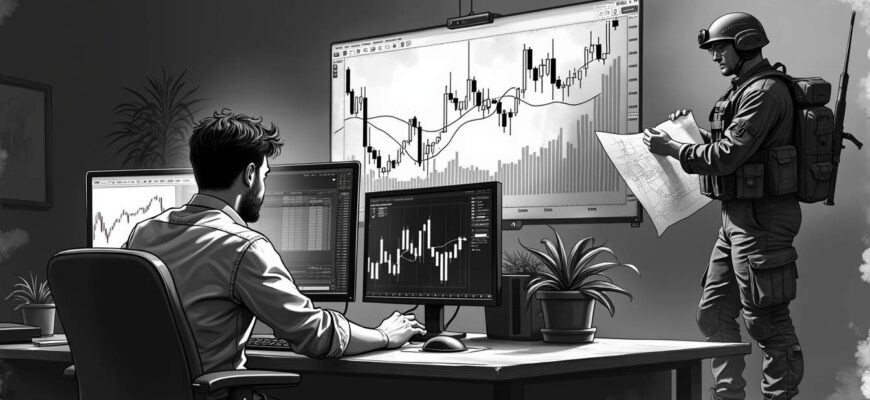Fear is a huge player in decision-making, especially in high-stakes environments like crypto trading and tactical operations. Knowing how fear works and how to control it can really make a difference. Let’s take a closer look at its role in these two very different but somewhat similar fields.
Fear and Greed in Crypto Trading
In the crypto trading world, fear and greed are the driving forces behind most market moves. Fear can show up as hesitation to jump into a trade, backing out of executing a trade, or panic selling when prices tumble. These emotional responses can lead to decisions that stray from a well-planned trading strategy. Picture a trader holding onto a losing position longer than they should because they’re scared to realize a loss.
How do you manage fear in crypto trading? A solid trading plan and risk management strategies are key. Plus, emotional discipline is crucial. Practicing mindfulness can help traders recognize the signs of fear—like that hesitation or impulsivity—and take a step back to reassess their choices calmly. Accepting that losses are just part of the game and focusing on the strategy rather than the short-term returns can help you keep fear at bay.
Tactical Operations: Managing Fear
On the other hand, in tactical operations, especially military and special ops contexts, fear is managed through training and psychological techniques. One effective method is fear inoculation. Soldiers are repeatedly exposed to high-stress scenarios to get used to the conditions they’ll face when the heat is on. This exposure helps to lessen their fear response and lets them perform better under pressure.
Techniques like arousal control, building confidence through training with their weapons and drills, and compartmentalization are all used to help soldiers manage their fear. They learn to keep their mind and body steady within chaotic environments, ensuring they can complete their duties effectively.
The special operations troops don’t just kick fear to the curb. They learn to work through it. They know that fear can make them hesitate, so they gain mastery over the situation and themselves through extensive training and mental prep.
Ethical Considerations of Using Fear
In organizational contexts, using fear as a strategy is usually seen as unethical. Fear messes with human growth, learning, and ethical decision-making. It triggers a “fight-or-flight” response that can lead to lower-level decision-making, ethical blindness, and straying from organizational values. This approach is harmful to creating a positive work environment.
In marketing, fear can be ethical if it’s done thoughtfully and transparently. Highlighting potential risks while offering solutions, and avoiding manipulation of customer emotions, are essential. The messaging should respect the audience.
In broader tech and societal contexts, ethical issues about fear use are also relevant. For example, the ethical use of AI and other technologies must consider their effects on human emotional experience and well-being.
Parallels Between Warfare and Blockchain Technology
In warfare, stealth tactics involve advanced tech to keep vehicles or personnel undetectable or hard to track. Blockchain technology’s stealth addresses boost anonymity, making transactions hard to trace. They create a unique address for each transaction, meaning that even if you get multiple transactions, they all link to different addresses.
An ethical approach to using fear in marketing should be thoughtful and honest. As we see in warfare, there’s a balance between being undetected and achieving goals. In blockchain, it’s about balancing transparency with anonymity.
Enhancing Security in High-Risk Industries Using Blockchain Technology
Blockchain’s decentralization can greatly boost security in high-risk industries. The decentralized system means every transaction is recorded across all nodes, making it tough for criminals to steal or modify data.
Robust consensus mechanisms and increased decentralization are key to tackling security challenges. Using Proof-of-Stake alongside other methods makes it harder for one entity to control the network.
In high-risk industries, protecting private data is crucial. Blockchain should only share permitted information. Organizations need to evaluate how they’re using it to avoid exposing sensitive data.
High-risk industries must also be mindful of specific cyber threats related to blockchain. This includes vulnerabilities in consensus protocols and breaches of privacy, as well as the risk of compromising private keys.
Integrating traditional cybersecurity best practices with blockchain technology is essential. Risk assessments and regulatory adherence are necessary for data protection and safety.
Finally, addressing centralization risks and network congestion is vital for securing blockchain networks. Using decentralized cloud services and ensuring balanced power distribution can help mitigate these risks.








